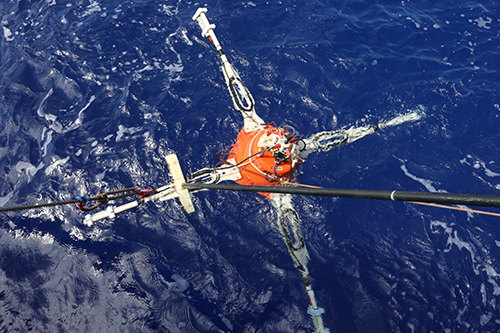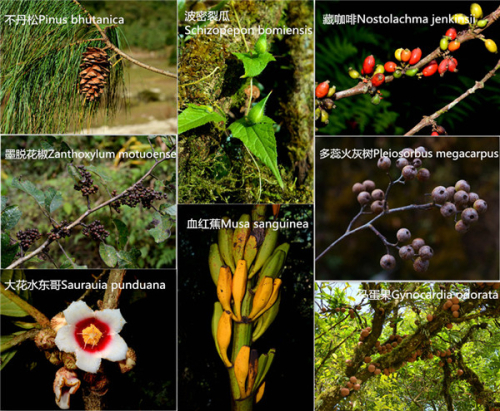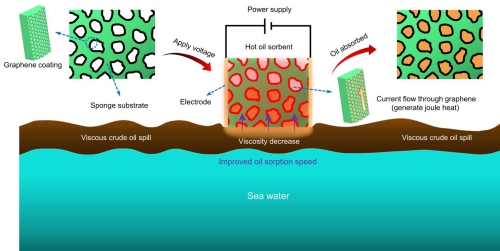

Would you like to know what the Chinese Academy of Sciences (CAS)’s research accomplishments were in the first quarter of 2017?
CAS is asking you to select the top achievements in science and technology innovation in Q1. We highly appreciate your support for CAS’s innovation initiatives. Please send your suggestions to zohu@cashq.ac.cn.
1. Major breakthrough in Fengyun-4 satellite’s infrared payload
Shanghai Institute of Technical Physics, CAS

First color composograph by Fengyun-4A’s radiometer [Photo from Shanghai Institute of Technical Physics, CAS]
The State Administration for Science, Technology and Industry for National Defense and the China Meteorological Administration on February 27 jointly released the first images and data from the Fengyun-4 weather satellite, including data obtained through remote sensing technology by the satellite’s multi-channel scanning imagery radiometer and infrared atmospheric sounding interferometer developed by the Shanghai Institute of Technical Physics of CAS.
Fengyun-4 was one of the first satellites in the world capable of providing near real-time three-dimensional information about the Earth.
This achievement is of epoch-making significance to the improvement of global observation capability, and also shows that China’s new-generation geostationary meteorological satellite has an advantage in international competition.
As the world’s first fine spectral detection instrument operating in geostationary orbit, the atmospheric sounding interferometer provides more than 1,500 spectral channels, making it possible to conduct in-depth research of atmospheric convection and support more accurate forecasting of bad weather that could have potentially disastrous effects. There are good prospects for the technology’s application, which can bring huge social and economic benefits.
2. Coal-based ethanol industry demonstration project up and running
Dalian Institute of Chemical Physics, CAS

Coal-based ethanol industry demonstration facility with an annual production capacity of 100,000 metric tons of anhydrous ethanol [Photo from Dalian Institute of Chemical Physics, CAS]
The world's first coal-based ethanol industry project based on proprietary technology developed by the Dalian Institute of Chemical Physics of CAS began to produce anhydrous ethanol on January 11.
The State-owned Shaanxi Yanchang Petroleum Group’s synthetic-gas-to-ethanol facility, capable of generating 100,000 metric tons of anhydrous ethanol annually, has been running smoothly for two months, marking the success of a method that combines dimethyl ether and methyl acetate into anhydrous ethanol, the first of its kind in the world.
The latest breakthrough shows China’s technology has reached world advanced levels in this field and the country is able to design and build large coal-based ethanol facilities with a capacity of one million tons or more. The technology is of strategic significance to China’s energy and food security, clean coal utilization and reduction of air pollution.
3. Major breakthrough in exploring 10,000-meter trench
Deep sea expedition team, CAS

OBEM [Photo from deep sea expedition team, CAS]
The deep sea expedition team of CAS returned to Sanya, south China’s Hainan province on March 23, after completing 113 experiments and other tasks.
The 68-day expedition to the Challenger Deep in the Mariana Trench made China the first country to acquire 10,000-meter-deep artificial seismic profile data with a domestic ocean bottom seismograph.
Haiyi, China's self-developed underwater glider, dived to a depth exceeding the previous world record of 6,003 meters three times and set a new record of 6,329 meters. Its undersea trips added up to 135 kilometers over a total of 88 hours, and brought back a large amount of high-resolution deep-sea data.
During the trip, China’s independently developed submersible Haidou dived to over 10,000 meters five times. It reached the sea bottom at a depth of 10,886 meters, breaking a technological bottleneck to allow China to conduct unmanned navigation and video transmission at a depth of over 10,000 meters for the first time.
4. Germplasm collection in Medog, Tibet
Germplasm Bank of Wild Species, Kunming Institute of Botany, CAS

Some of the germplasm resources collected in Medog, Tibet [Photo from Germplasm Bank of Wild Species, Kunming Institute of Botany, CAS]
The Kunming Institute of Botany of CAS completed germplasm collection in Medog county, Tibet, the first of its kind in the world, in February.
The expedition team entered the county’s primeval forests at 700 to 4,300 meters above sea level and collected more than 1,300 botany samples, 371 seed samples and more than 60 other types of living materials. The scientists filled a gap in the germplasm bank’s seed collection in this region, and also laid a foundation for future collection and storage of germplasm in the southeast region.
The team also discovered five previously unrecorded genera in Tibet, which will be helpful for the understanding of the formation and evolution of plant diversity from the perspective of genomic or molecular levels.
5. Graphene-wrapped sponges to end spilled crude oil nightmare
University of Science and Technology of China

A graphene-wrapped sponge absorbs viscous crude oil when heated with electricity. [Photo from University of Science and Technology of China]
Crude oil spills in oceans have been frequent in recent years, damaging the environment and wasting resources. The spilled oil, due to its high viscosity, is hard to collect and clean up using traditional technology.
Scientists at the University of Science and Technology of China found a breakthrough solution to the problem by reducing the viscosity of crude oil and speeding up the oil-absorption time using graphene-wrapped sponges.
Source: cas.cn